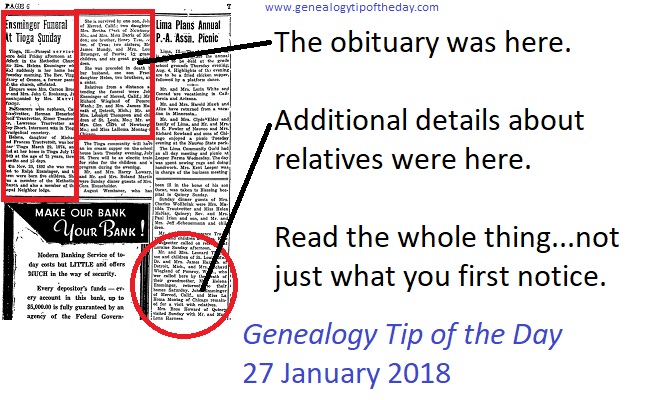Researchers come at items in newspapers from a variety of ways: manual searches, digital images with indexes that indicate the page, digital searches that target the specific item, etc. No matter how you get to it, make certain you read the entire page the item is located in–particularly obituaries. This 1940-era obituary listed out of town relatives, but did not specify the relationship. In a separate item in the local “gossip” section, they were again named–along with their relationship to the person whose funeral they were attending.
It may seem like in this case it would be “obvious” to find them, but sometimes when images come to our computer screen zoomed in from search results, it can be easy to not look at anything else. That’s a mistake.








4 Responses
Would love to know what other information was published. Unfortunately the clipping is too tiny!
That’s a good idea. My grandmother used to write 4 a local news gossip section. There’s no telling what I might find.
I have seen this happens many, many times especially in small town or rural area newspapers. I now look at as many pages of the newspaper on the date of the obit, death notice, funeral, etc., as are available.
I found a lot of information this way. Way back, the little rural papers reported EVERYTHING. If you had dinner with your parents one night during the week it was reported. If you went for a scenic drive on a Saturday, it was reported. Small towns usually didn’t have that many events happen as larger towns and cities then or even just a town in today’s terms. The space had to be filled with something.